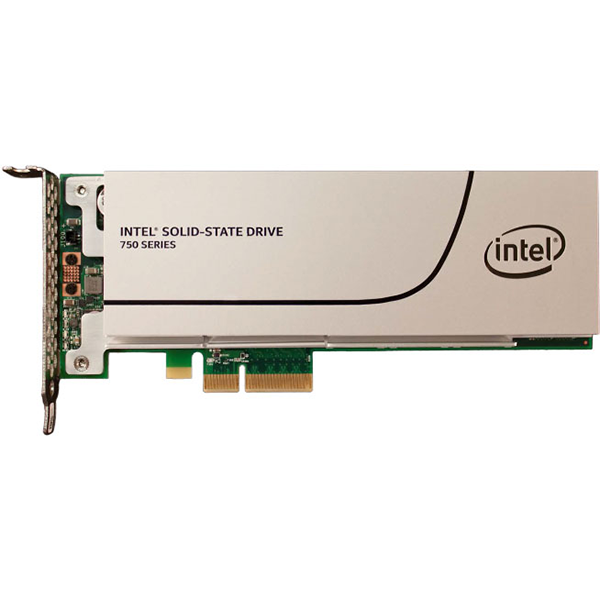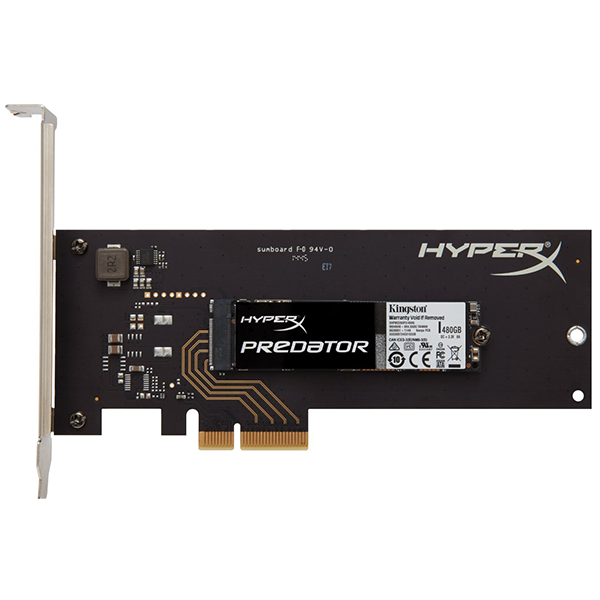Zotac Sonix NVMe SSD Review: Our First E7 Tests
Why you can trust Tom's Hardware
Four-Corner Performance Testing
Comparison Products
Creating a list of comparison hardware to go up against the Sonix wasn't difficult: only Intel and Samsung have 512GB-class SSDs with NVMe support. Not long ago, we also tested a Toshiba XG3 SSD with NVMe, but it remains an OEM model. Plus, we could only find a 128GB version to purchase.
The NVMe protocol reduces latency in the software stack, improving the I/O throughput of small blocks of data by cutting overhead. If you want to learn more about how the NVMe interface affects performance, check out this article.
To illustrate the differences more clearly, we're also including Kingston's AHCI-enabled Predator at the 480GB capacity point.
To read about our storage tests in-depth, please check out How We Test HDDs And SSDs. Four-corner testing is covered on page six of our How We Test guide.
Sequential Read
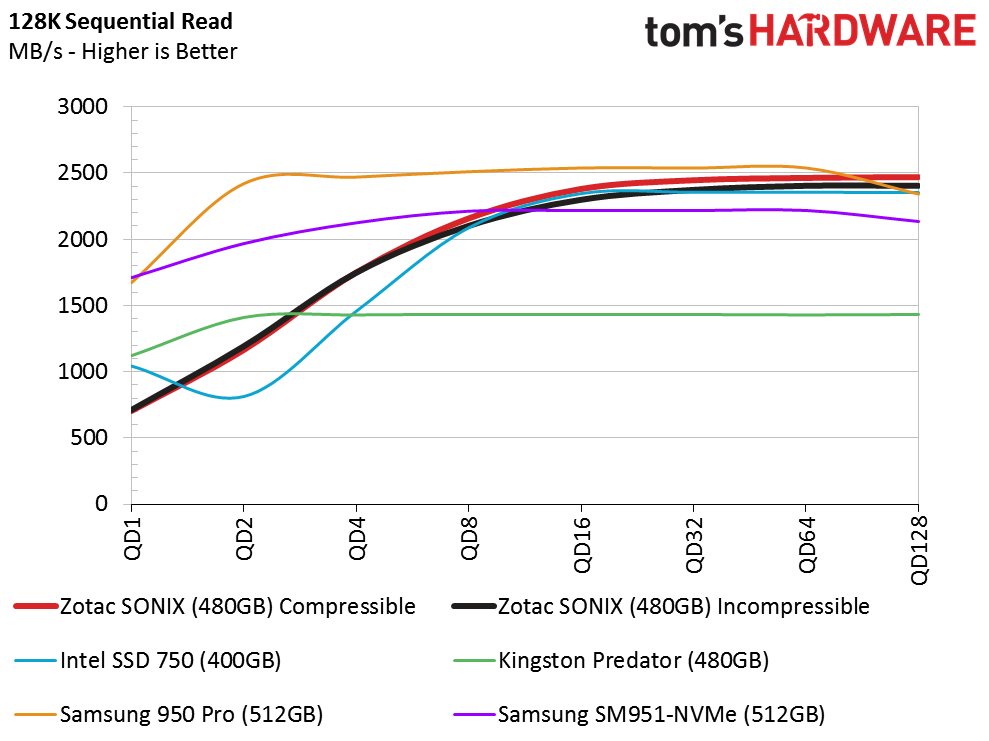
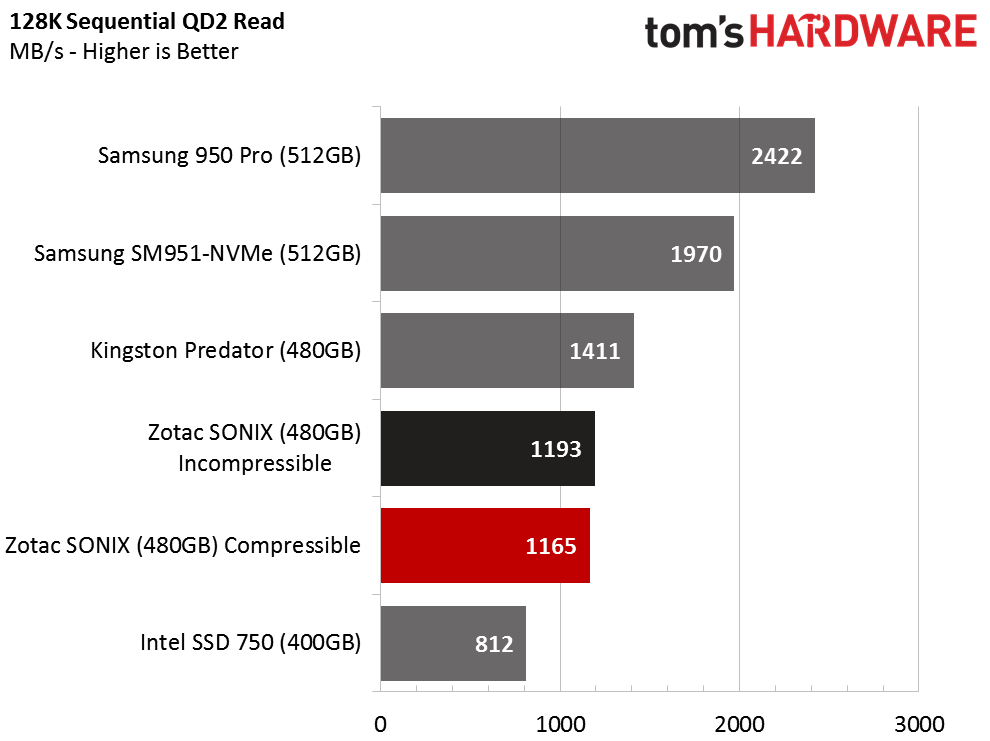
Our first synthetic tests show the Sonix under the influence of compressible and incompressible data. Most enthusiasts will want to pay attention to performance at queues one or two commands deep. Power users running professional software can look further up the scale. However, anything over a queue depth of eight represents workloads found almost exclusively in enterprise environments.
Zotac's 480GB Sonix, at least in its current state, struggles at a queue depth of one compared to the competing drives already out there. Still, it moves 128KB blocks sequentially faster than what you'd see from a SATA-attached SSD. And the Sonix scales well as the workload intensity rises. At high queue depths, it performs as well as the best NVMe-based desktop drives sold today.
Sequential Write
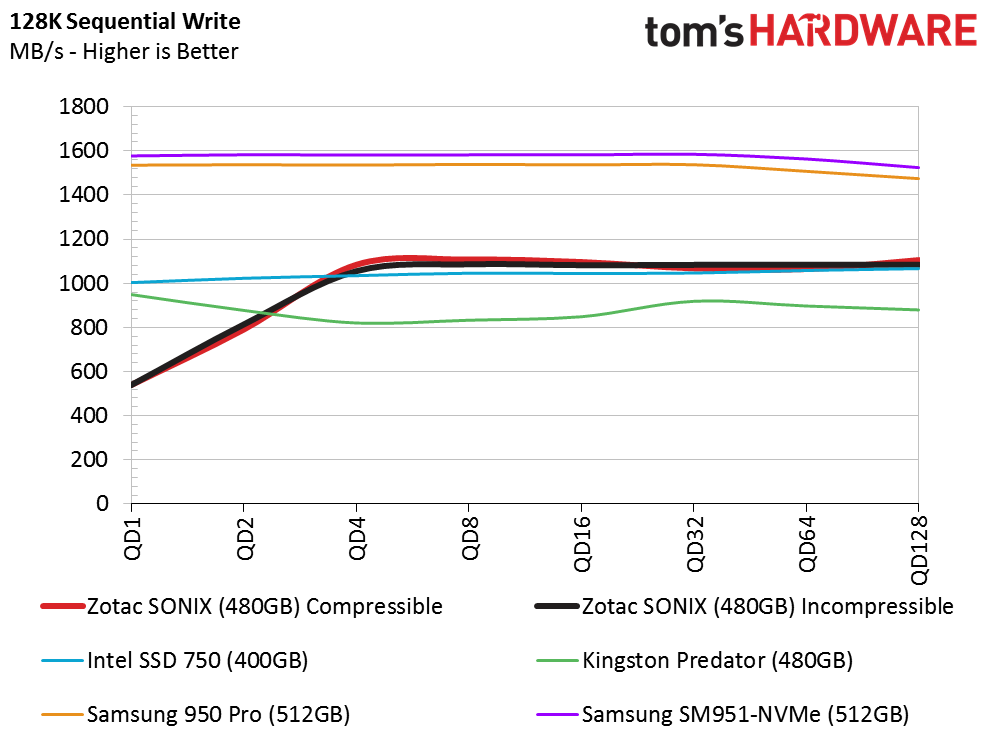
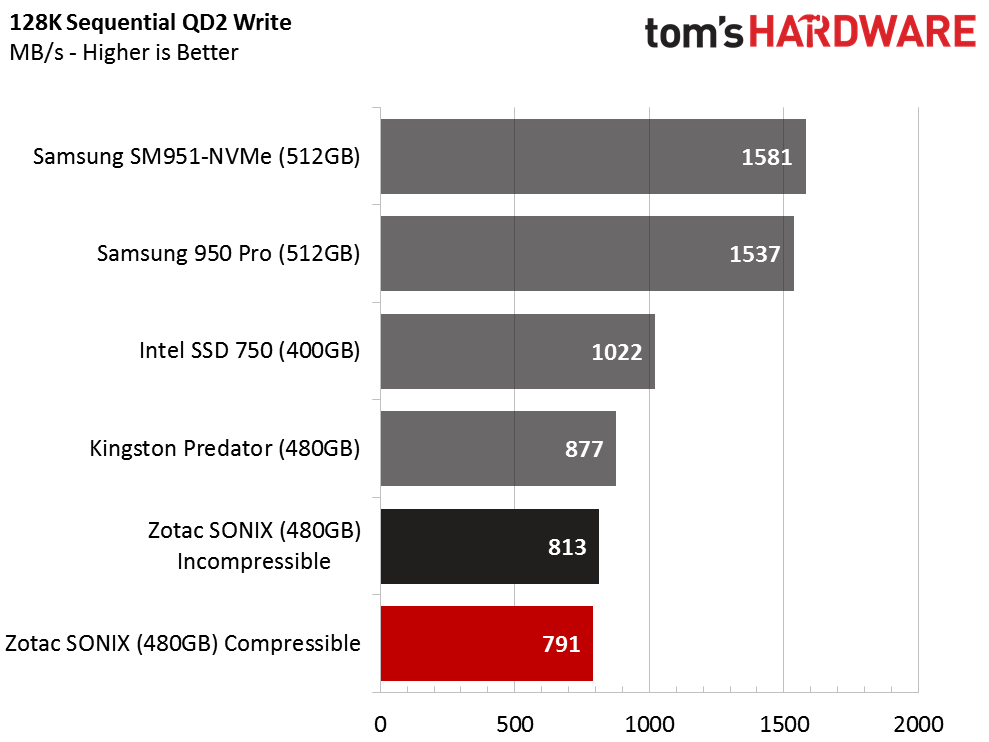
In our sequential write test, the Sonix falls short of Zotac's performance claims. We expected this; it's an issue we've seen from other NVMe-based drives.
Get Tom's Hardware's best news and in-depth reviews, straight to your inbox.
For a bit of context, AHCI operates on one command at a time, but can queue up to 32 of them. NVMe can operate on as many as 65,535 commands simultaneously, and each of those commands can queue another 65536. Existing software doesn't come close to leveraging those advanced capabilities. Although we could certainly test under conditions more favorable to NVMe to make it look better, the fact is that you simply won't see the interface's potential for years.
So, we record modest sequential write performance at a queue depth of one and two. At a queue depth of four, the Sonix hits its best performance using our testing methods and levels off through the rest of the range.
Random Read
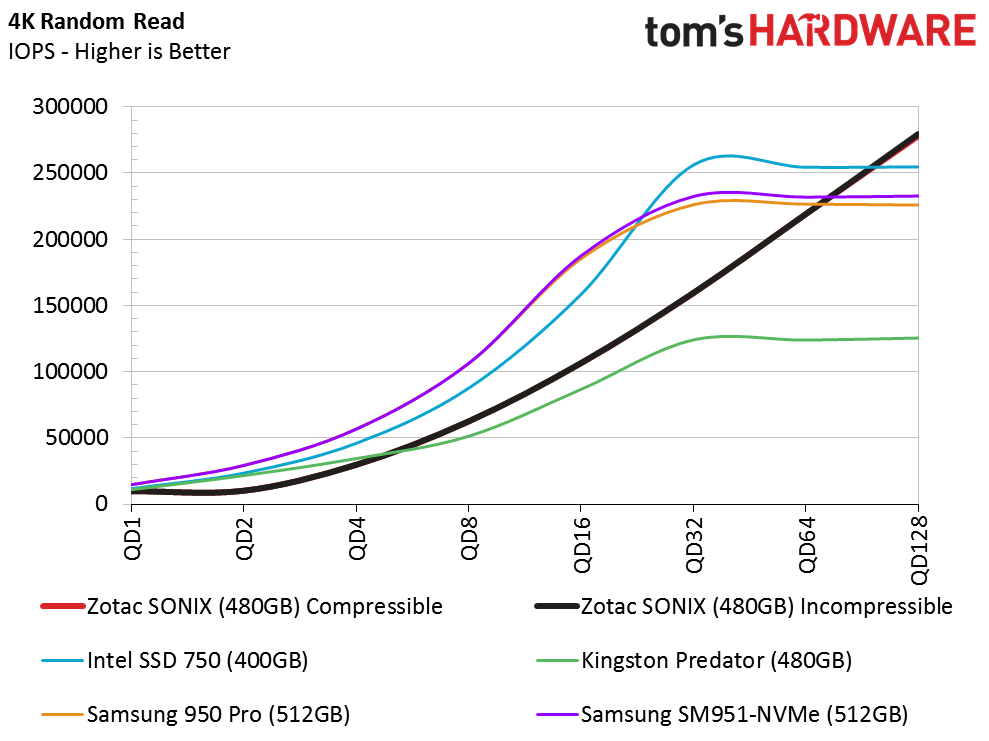
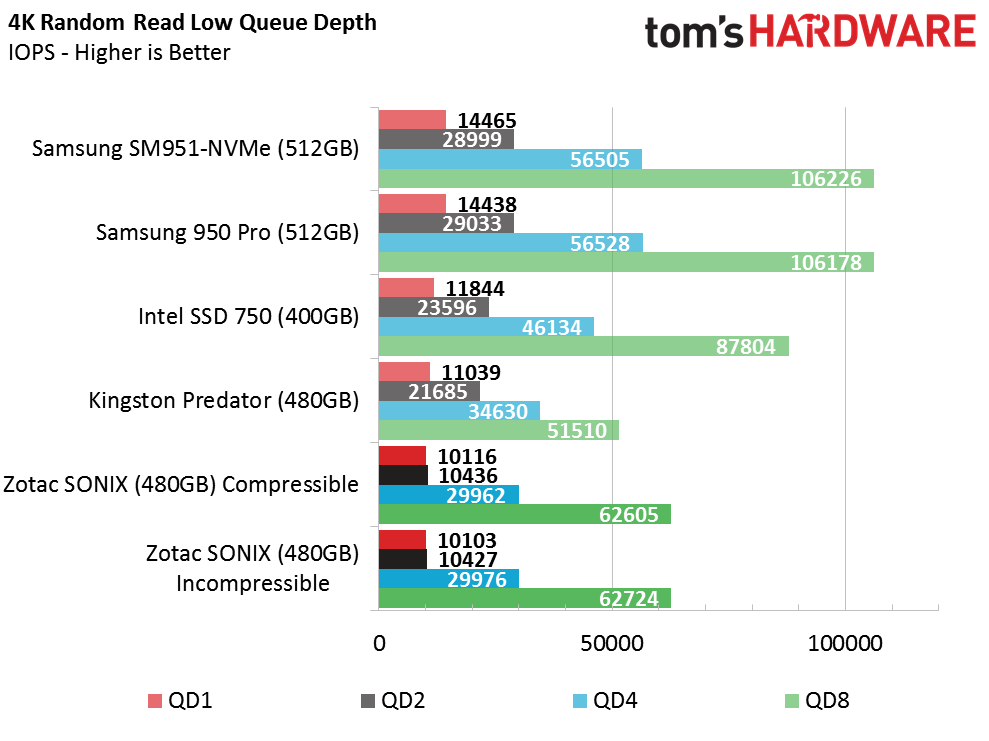

Zotac's Sonix delivers just over 10,000 random read IOPS at a queue depth of one, but presents the weakest performance of the group at low queue depths. Conversely, at the other end of the chart, the Sonix delivers better random I/O throughput than its competition. You get exceptional scaling through a queue depth of 128.
Given these numbers, Phison is likely working hard to improve performance at low queue depths before pushing final firmware to eager drive partners. Stability almost assuredly took first priority. But now it's time to coax more speed and additional features from the platform. The next build should include the L1.2 power feature, and we wouldn't be surprised to see optimizations that ameliorate some of these preliminary soft spots.
Random Write
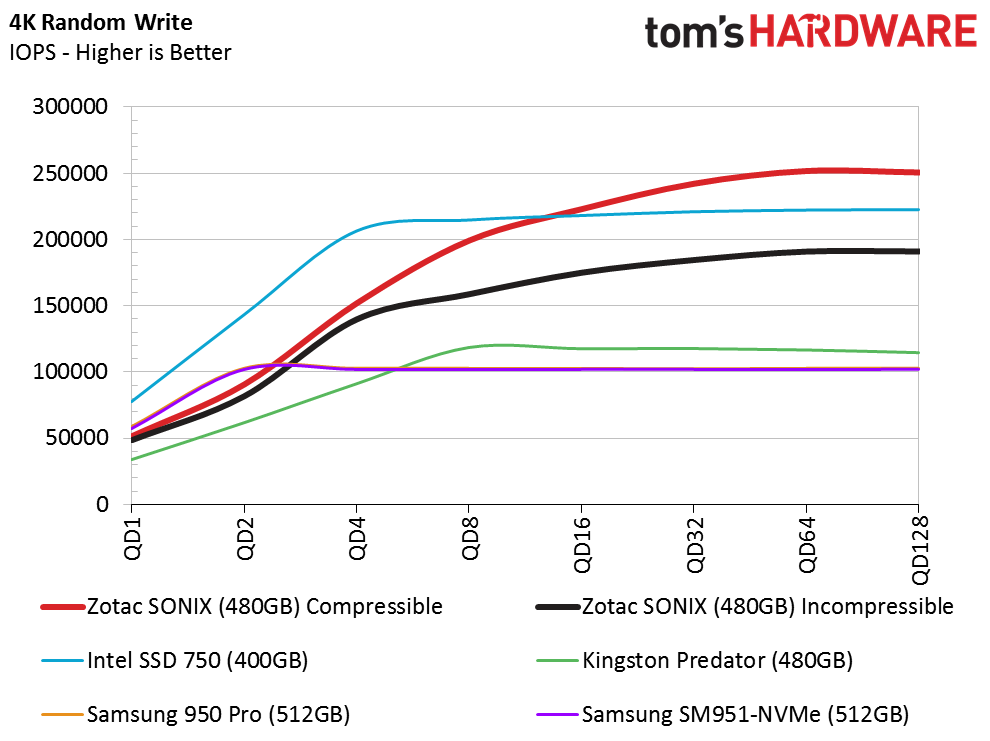
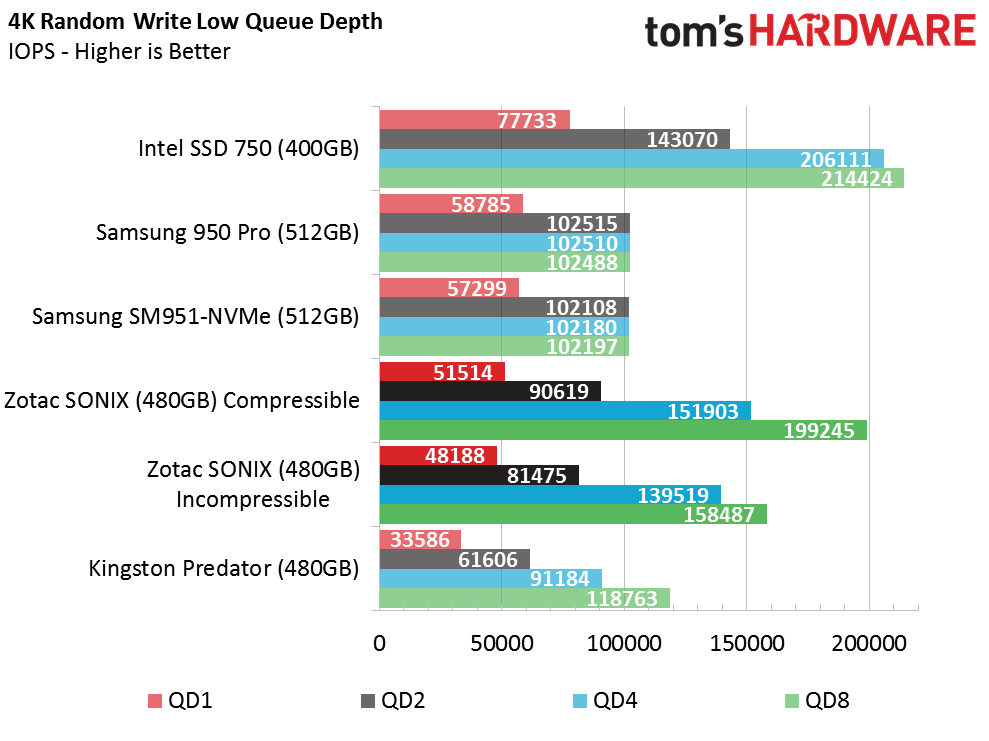
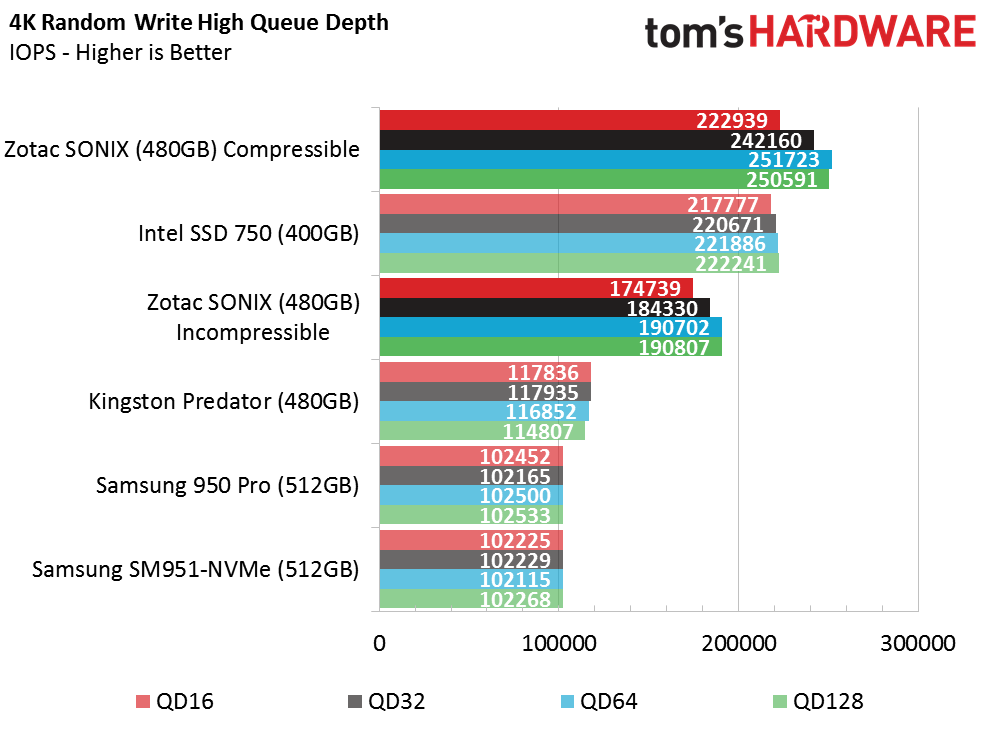
The only test other than Anvil where we observed a performance difference between compressible and incompressible data involved small blocks of data written randomly. As we've seen, the Sonix struggles at low queue depths against the 950 Pro and SM951-NVMe. Those two drives don't scale well beyond a queue depth of two though, and hit a wall at 100,000 IOPS. Meanwhile, Zotac's 480GB Sonix continues to scale well, eventually peaking in excess of 250,000 IOPS.
Current page: Four-Corner Performance Testing
Prev Page A Closer Look And Inital Performance Testing Next Page Mixed Workloads And Steady State
Chris Ramseyer was a senior contributing editor for Tom's Hardware. He tested and reviewed consumer storage.
